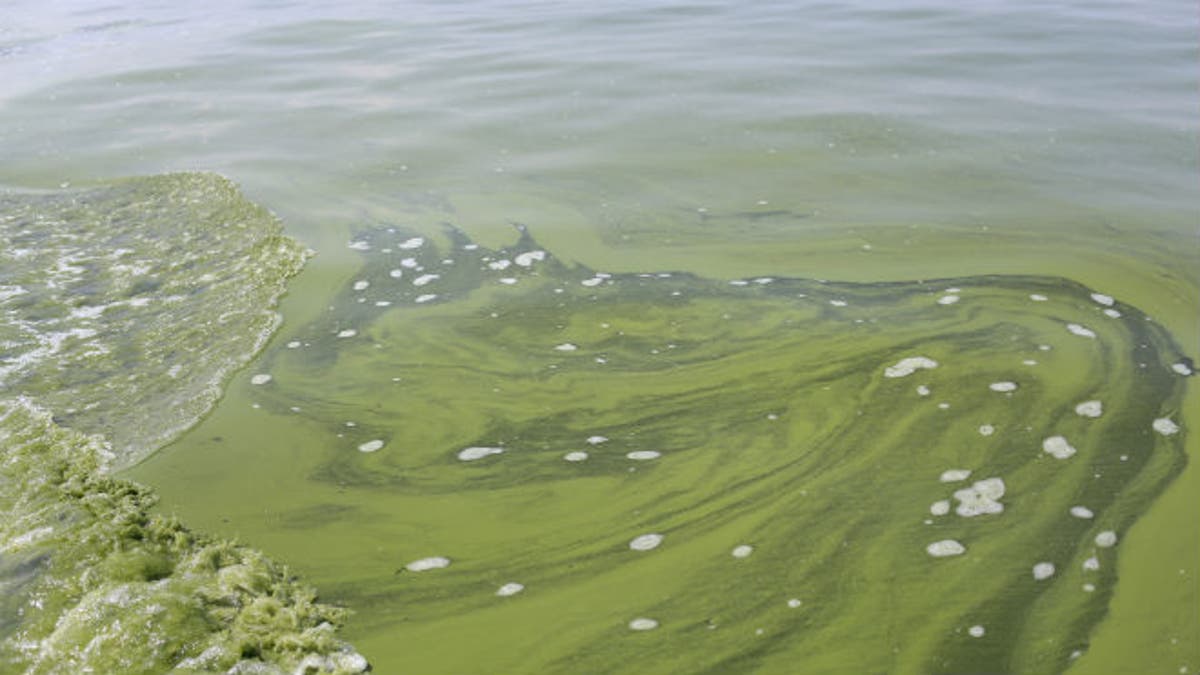
Algae is seen near the City of Toledo water intake crib, Sunday, Aug. 3, 2014, in Lake Erie, about 2.5 miles off the shore of Curtice, Ohio. (AP Photo/Haraz N. Ghanbari)
The U.S. Environmental Protection Agency released the first nationwide guidelines Wednesday for determining when algal toxins have reached dangerous levels in public water systems and do-not-drink warnings might be needed.
Up to 48 million people nationwide get drinking water from lakes and reservoirs that could become fouled with toxins generated by algae-like bacteria, the federal agency said. Pollution from cyanobacteria, otherwise known as blue-green algae, in Lake Erie left more than 400,000 people in northwestern Ohio and southeastern Michigan without usable tap water for two days last August.
Climate change and higher levels of nutrients such as phosphorus may be culprits in a rising number of algae contamination cases, scientists say.
The EPA guidelines use "the best available science to ensure the safety of America's drinking water," Administrator Gina McCarthy said. "We will work closely with our partners at the state and local levels on monitoring, treating and communicating about the toxins, as well as addressing the sources of nutrients that fuel these harmful algal blooms."
Many state and local officials have called for a consistent national standard for algal toxins in drinking water. The EPA stopped short of a mandatory ceiling, instead identifying thresholds above which human health could be endangered.
Water plant operators and other officials could use the guidelines as benchmarks for triggering actions such as stepped-up monitoring, treating water to reduce toxins or issuing health advisories.
The guidelines focus on two common toxins, microcystin and cylindrospermopsin, produced by blue-green algae. They can cause vomiting, diarrhea and other symptoms and have killed dogs and livestock. Prolonged exposure can damage the liver and kidneys.
The EPA's recommended limits for children younger than school age were 0.3 parts per billion for microcystin and 0.7 ppb for cylindrospermopsin. For everyone else, the thresholds were 1.6 ppb for microcystin and 3 ppb for cylindrospermopsin.
A number of states, including Ohio, Oregon, Minnesota, Florida and Oklahoma, have their own standards, most based on a 1 ppb limit recommended by the World Health Organization in 1998 and used by more than a dozen countries. The EPA numbers reflect more up-to-date science, said Peter Grevatt, the agency's top regulator for groundwater and drinking water.
The EPA set a separate standard for young children because they drink more water per body weight than older children and adults, Grevatt said.
The thresholds are based on exposure for 10 days. That is justified by scientific literature and more workable for state and local governments than reacting to a single event, he said.
The guidelines are helpful targets for utilities, said J. Alan Roberson, director of federal relations for the American Water Works Association, but meeting them will pose challenges. When algal toxins exceed recommended levels, plant operators will have to seek a tricky balance of treating water through methods such as boosting chlorine inputs without exceeding prescribed disinfection limits.
The association, whose 50,000 members produce 80 percent of the nation's drinking water, wants stronger action to cut down on phosphorus and other nutrients that cause algal pollution, Roberson said.
"That will make it easier for people to be confident in the quality of their tap water," he said.
